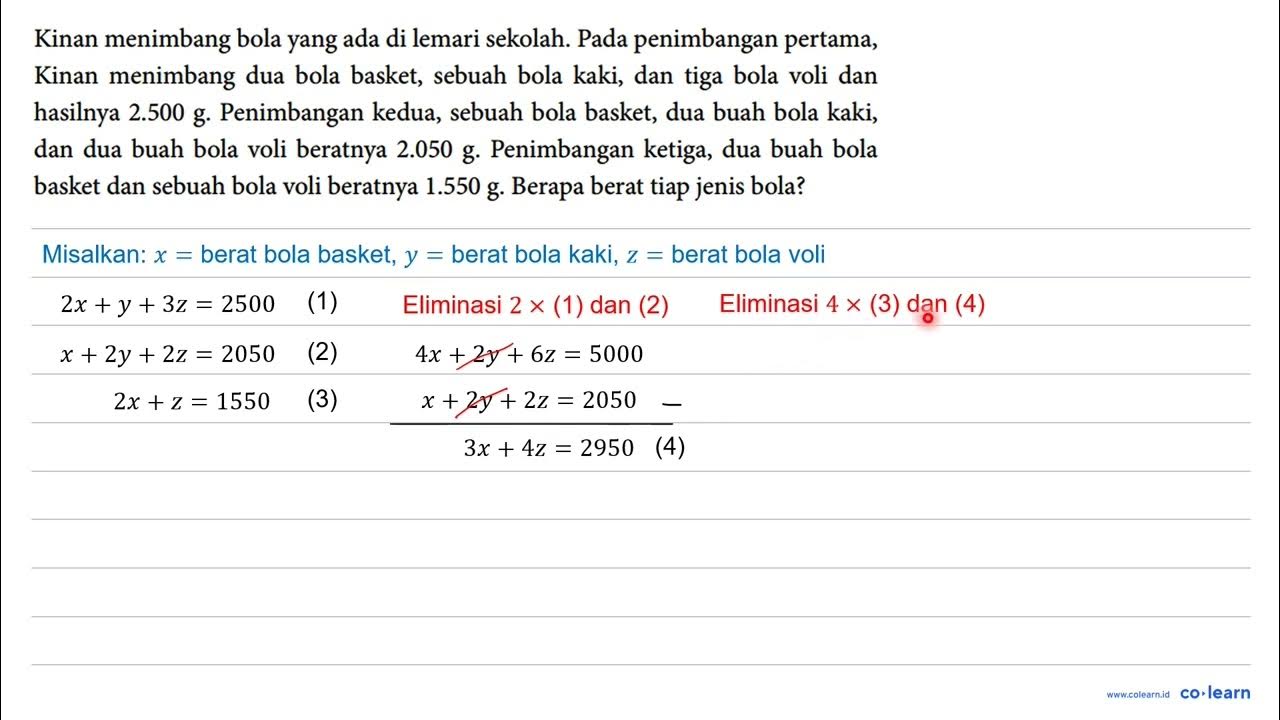Stoichiometry Tricks
Summary
TLDRIn this tutorial, the process of solving a grams-to-grams stoichiometry problem is demonstrated using the example of how many grams of carbon dioxide are produced when 2800 grams of octane are burned in excess air. The video walks through balancing the combustion reaction, calculating molar masses, converting grams to moles, and applying stoichiometry to reach the final answer of 8600 grams of CO2. The tutorial also showcases tricks for simplifying the process by combining the steps into a single calculation, making the solution more efficient. The presenter emphasizes understanding the steps and provides tips to streamline the calculations.
Takeaways
- 😀 This tutorial focuses on solving a grams to grams stoichiometry problem and simplifying the process.
- 😀 The problem involves calculating the amount of carbon dioxide produced from the combustion of 2800 grams of octane.
- 😀 The combustion of octane (C8H18) with excess oxygen (O2) results in carbon dioxide (CO2) and water (H2O).
- 😀 To solve the problem, first balance the chemical equation, ensuring all elements are properly accounted for.
- 😀 The balanced equation for the combustion of octane is: 2 C8H18 + 25 O2 → 16 CO2 + 18 H2O.
- 😀 The molar mass of octane is 114.2 grams per mole, and the molar mass of carbon dioxide is 44.01 grams per mole.
- 😀 Convert grams of octane to moles using its molar mass (2800 grams of octane = 24.5 moles).
- 😀 Convert moles of octane to moles of carbon dioxide using the mole ratio from the balanced equation (24.5 moles of octane = 196 moles of CO2).
- 😀 Convert moles of carbon dioxide to grams using its molar mass (196 moles of CO2 = 8600 grams of CO2).
- 😀 The final result is 8600 grams of carbon dioxide, which is more than three times the mass of the gasoline consumed.
- 😀 To simplify the process, you can combine all the conversion steps into a single calculation using a chain of conversion factors.
Q & A
What is the main goal of the tutorial?
-The main goal of the tutorial is to solve a grams-to-grams stoichiometry problem, learn how to combine three steps into one, and discuss tricks to make the solution easier.
What is the problem being solved in the tutorial?
-The problem being solved is how many grams of carbon dioxide are produced when 2800 grams of octane are burned in excess air.
What does 'excess air' mean in the context of this combustion problem?
-'Excess air' means that there is more than enough oxygen available for the combustion reaction, so it is assumed to be complete combustion of octane.
What is the chemical equation for the complete combustion of octane?
-The balanced chemical equation for the complete combustion of octane is: 2 C8H18 + 25 O2 → 16 CO2 + 18 H2O.
Why is oxygen balanced last in the chemical equation?
-Oxygen is balanced last because it appears in three different chemicals, making it more complex to balance earlier in the process.
What are the molar masses of octane and carbon dioxide?
-The molar mass of octane (C8H18) is 114.2 grams per mole, and the molar mass of carbon dioxide (CO2) is 44.01 grams per mole.
How do you convert grams of octane to moles?
-To convert grams of octane to moles, divide the mass of octane by its molar mass (114.2 grams per mole). For example, 2800 grams of octane divided by 114.2 grams per mole gives 24.5 moles of octane.
How do you convert moles of octane to moles of carbon dioxide?
-To convert moles of octane to moles of carbon dioxide, use the balanced chemical equation. The ratio of octane to carbon dioxide is 2:16, so you multiply the moles of octane by 16/2 to find moles of carbon dioxide.
What is the final step in solving this stoichiometry problem?
-The final step is to convert moles of carbon dioxide to grams. This is done by multiplying the moles of CO2 by its molar mass (44.01 grams per mole).
How can the three steps of stoichiometry be simplified into one calculation?
-The three steps can be combined into one calculation by multiplying the given mass (2800 grams of octane) by three conversion factors: the molar mass of octane, the ratio from the balanced chemical equation, and the molar mass of carbon dioxide.
Outlines

هذا القسم متوفر فقط للمشتركين. يرجى الترقية للوصول إلى هذه الميزة.
قم بالترقية الآنMindmap

هذا القسم متوفر فقط للمشتركين. يرجى الترقية للوصول إلى هذه الميزة.
قم بالترقية الآنKeywords

هذا القسم متوفر فقط للمشتركين. يرجى الترقية للوصول إلى هذه الميزة.
قم بالترقية الآنHighlights

هذا القسم متوفر فقط للمشتركين. يرجى الترقية للوصول إلى هذه الميزة.
قم بالترقية الآنTranscripts

هذا القسم متوفر فقط للمشتركين. يرجى الترقية للوصول إلى هذه الميزة.
قم بالترقية الآنتصفح المزيد من مقاطع الفيديو ذات الصلة

Stoffumsatz berechnen, Stöchiometrisches Rechnen | Chemie Endlich Verstehen

ESTEQUIOMETRÍA Gramos a Gramos (paso a paso)

Stoichiometry example problem 1 | Physical Processes | MCAT | Khan Academy

Kinan menimbang bola yang ada di lemari sekolah. Pada penimbangan pertama, Kinan menimbang dua bo...

Concentração das Soluções em Porcentagem

Making Phenol by decarboxylation of salicylic acid
5.0 / 5 (0 votes)
